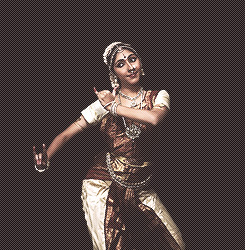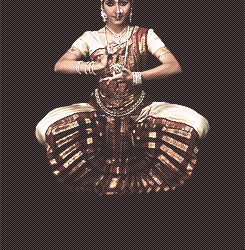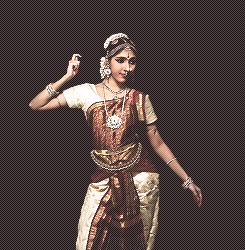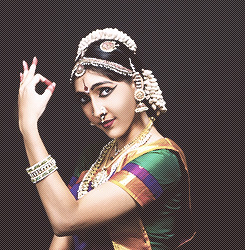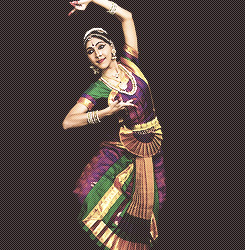Photo
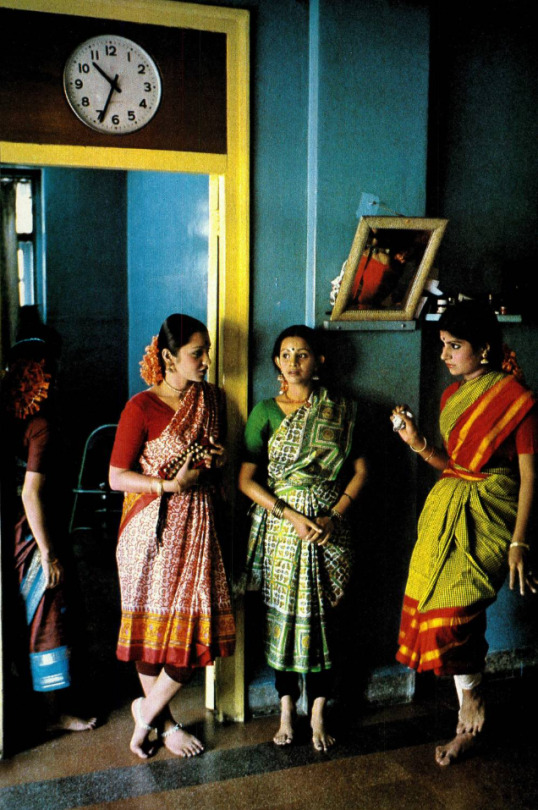
At a school in a South Indian neighbourhood, young women take a break in their study of Bharata Natyam, a classical dance form.
India, 1981
347 notes
·
View notes
Text
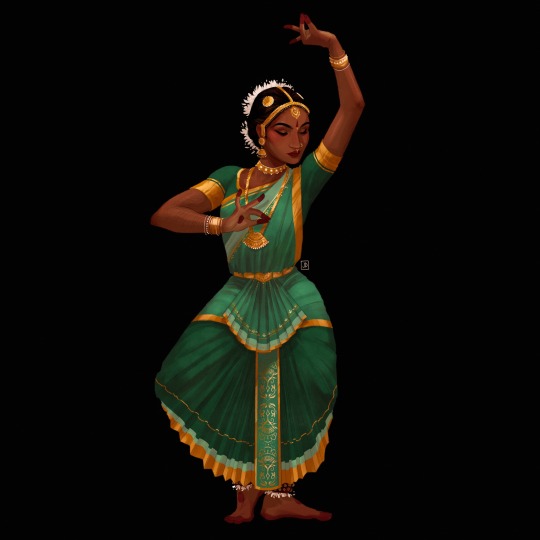
in “the gilded wolves” by @roshanichokshi, laila is made to don the cover of a nautch dancer as part of a job. she’s a skilled bharatanatyam dancer & performs stunningly, but is still bothered by the cultural inaccuracies of the outfit she must wear: the fact that her hair is left unbound, the way her midriff & chest are exposed, her hands lacking henna, etc. so grew the need to draw her in traditional attire. from the state of tamil nadu, bnat is one of the oldest indian classical dances. like many of these dances, it has strong ties to religion (i.e. the depiction of hindu epics) but can convey more secular themes as well. alta or henna on the hands & feet emphasize movement. bold makeup accentuates expressions, particularly the 9 navarasa: love/shringara, laughter/hasya, sadness/karuna, anger/roudra, courage/veera, fear/bhaayanaka, disgust/bheebhatsya, surprise/adbhutha) & peace/shaantha. mudras (gestures) are used to illustrate many ideas; for example, there are symbols for bird, water, breeze, etc. bharatanatyam is actually a fairly new term; among other names, the dance was once known as sadir. first a temple tradition, it was practiced by devadasi women “married” to lives of religious worship & service, as well as the arts. with the arrival of colonial rule, many traditional dances were outright banned & temples destroyed. dancers went from to being among the most respected to being sexualized & deemed prostitutes by british occupiers. the profession of nautch dancers arose for the entertainment of colonizers & the mughal elite. slowly, it became so that even the term “devadasi” was offensive & to be considered one was damning. attempting to separate the dance from the stigma attached to the devadasi community, rukmini devi arundale is credited with refining bnat in a way that was considered suitable for the upper class & a larger global audience. though intertwined with politics & casteism, bnat is still a beautiful, revered art form practiced widely in south asia & the diaspora.
laila belongs to roshani chokshi please do not repost or remove description do find me on instagram!
386 notes
·
View notes
Text
Bharatnatyam









Tagging💛- @gandharvika @thebengalurubisexual @thedesipoet @gulaabee @neela-varnam
Source: Pinterest
107 notes
·
View notes
Text


Indian Classical Dances Mandala
A mandala made on the seven main classical dances of India
Odissi ( traditional head piece )
Bharatnatyam ( sun-moon head piece )
Kuchipudi ( decorative braid ornament )
Kathakali ( face paint )
Kathak ( the skirt or lehenga )
Mohiniyattam ( the pleated fan in the front )
Manipuri ( head piece used by dancers playing the role of Krishna )
@gandharvika helped me a lot with information about the costumes of the different dance forms.
Click on the pictures for better resolution.
@callonpeevesie @dogsandcatsandmiscellaneousstuff @shaonharryandpannisim @gulaabee @allegoriesinmediasres @cynical-ravenclaw @paneerlajwanti @gandharvika @jugn00-ish @adoginthemanger @burningqueentimemachine @kingweaslee @seekerbrave @peace-punch-captainhunch @laad-governess @scintillatea @medhasree @a-confusedmess @chaitastrophicpeepalert @pingu-with-butterfly-clips @the-slythering-raven @travalerray @its-srishti-bitch @jawlphoring @lemonphrogg @cipher-dorito @salt-n-caramel @your-favourite-skittles @blxck-wxxd-chaos
If you want to be added to or removed from the taglist then please let me know
259 notes
·
View notes
Photo








Hi, quarantine got me drawing classical Indian dance forms. (Also I’m a bit missing my home town but I digress.)
Anyhow, this isn’t intended as a field guide showing the most typical examples of each form (or I’d have Noble Intimidating Green Guy for Kathakali – have I ever mentioned how disconcerting it is to be standing in line and you turn around and Noble Intimidating Green Guy is RIGHT BEHIND YOU? very, that’s how much) just fun and, hopefully, accurate. I tried to not make Hilarious Goofs, but y’all dancers @ me if you feel like it. These are each a mix of references, if you were wondering, and not any specific person.
125 notes
·
View notes
Photo








Hi, quarantine got me drawing classical Indian dance forms. (Also I’m a bit missing my home town but I digress.)
Anyhow, this isn’t intended as a field guide showing the most typical examples of each form (or I’d have Noble Intimidating Green Guy for Kathakali – have I ever mentioned how disconcerting it is to be standing in line and you turn around and Noble Intimidating Green Guy is RIGHT BEHIND YOU? very, that’s how much) just fun and, hopefully, accurate. I tried to not make Hilarious Goofs, but y’all dancers @ me if you feel like it. These are each a mix of references, if you were wondering, and not any specific person.
125 notes
·
View notes
Photo

Gotta fix my mudra but I’m in love with my thesis girl ❤️
114 notes
·
View notes
Photo




❤ Dance, dance, dance ❤
It always pays to challenge yourself, and I am so pleased with this! After about a week of drawing and fiddling with the final result, I couldn’t be happier! I’m looking forward to another year of experimentation and just having fun with my art. Roll on 2018! 🙌 🙌
(Referenced and inspired by this performance!)
187 notes
·
View notes
Video
youtube
Vahana Alarippu in ragamalika depicting Muruga, Vishnu, Shiva and Devi with their vahanas
Bharata Natyam
15 notes
·
View notes
Photo

Il faut de nombreuses années d’étude et de pratique pour apprendre et maîtriser l'art du Bharata Natyam : ses mouvements des mains, des yeux, des pieds, ses expressions du visage, ses enchaînements de figures stylisées, ses différents rythmes, ses histoires, ses symboles … mais je pense qu'il faut aussi beaucoup d'entraînement pour savoir s'habiller avant une représentation, et danser avec tout ces bijoux.
******************************
It takes many years of study and practice to learn and master the art of Bharata Natyam: the movements of the hands, eyes, feet, facial expressions, sequences of stylized figures, different rhythms, stories , symbols … but I think it also takes a lot of training to kn
27 notes
·
View notes
Photo



Kuchipudi dancer Payal Ramchandani
(my beautiful teacher)
54 notes
·
View notes
Photo

My entry for this month’s Character Design Challenge: Indian Dancer
84 notes
·
View notes


